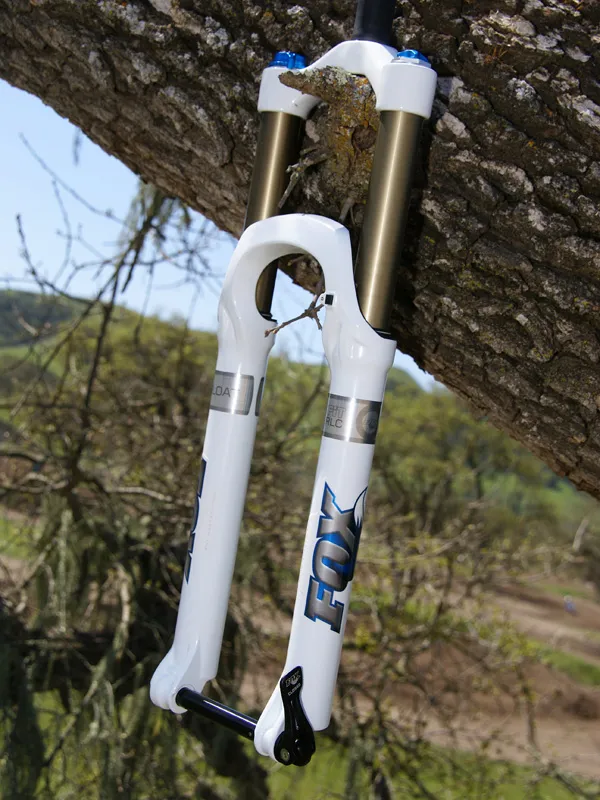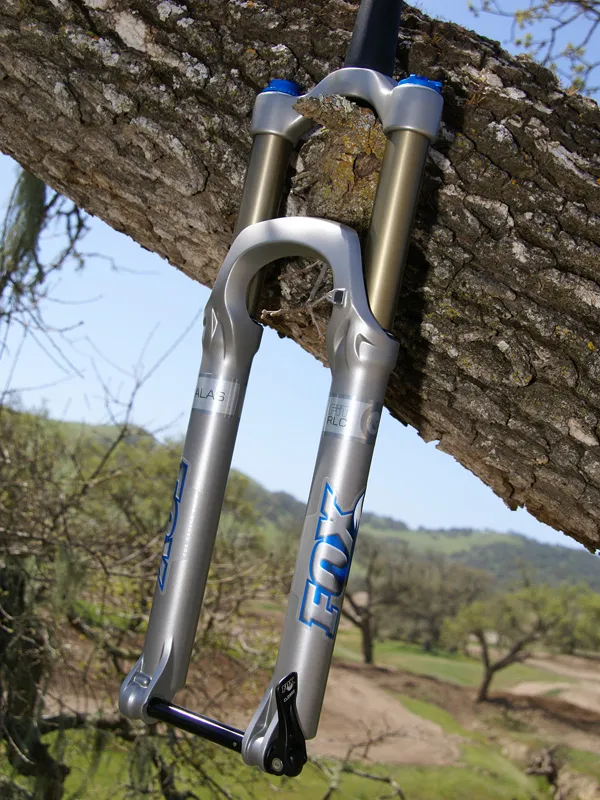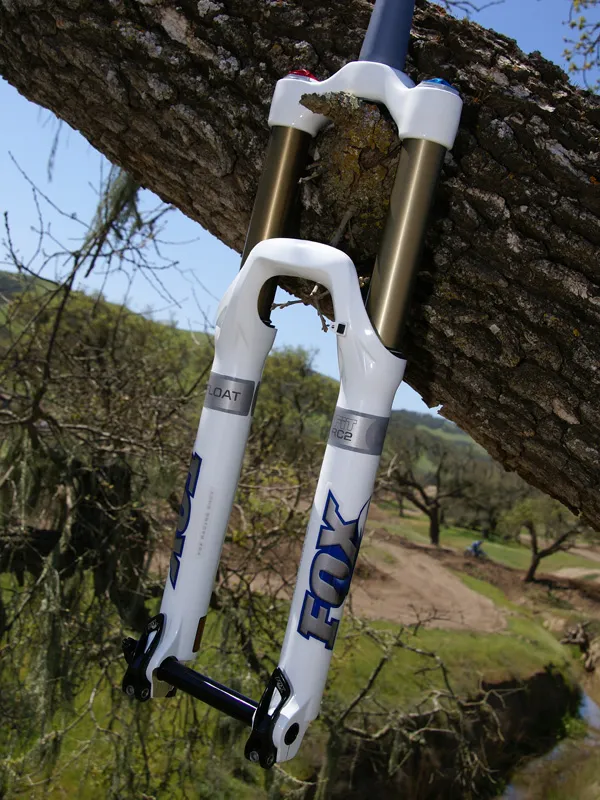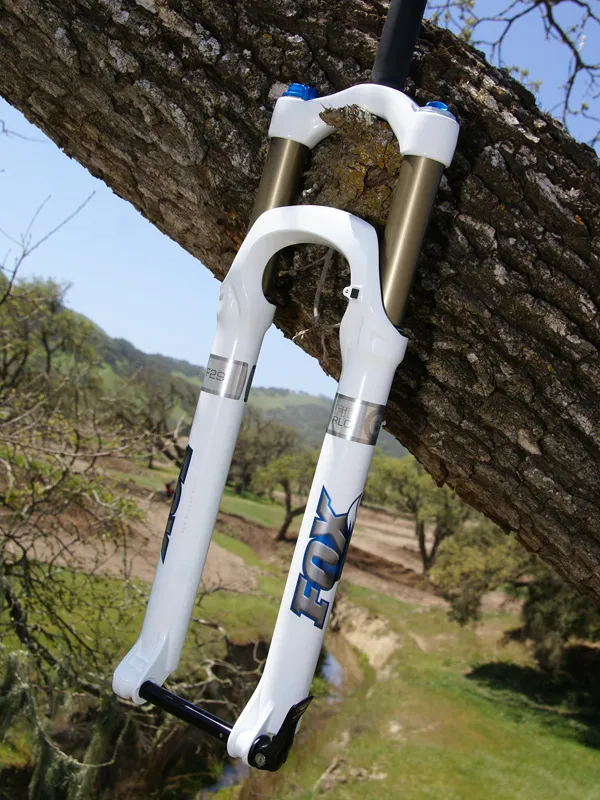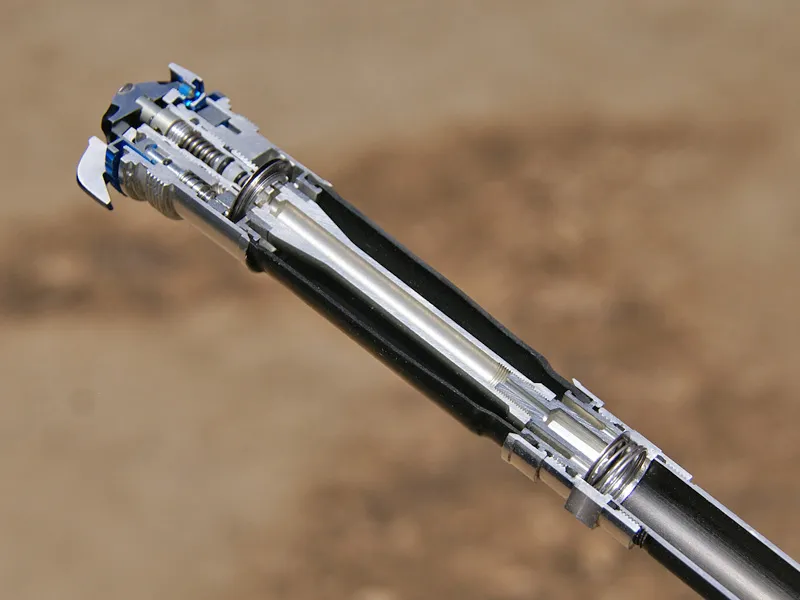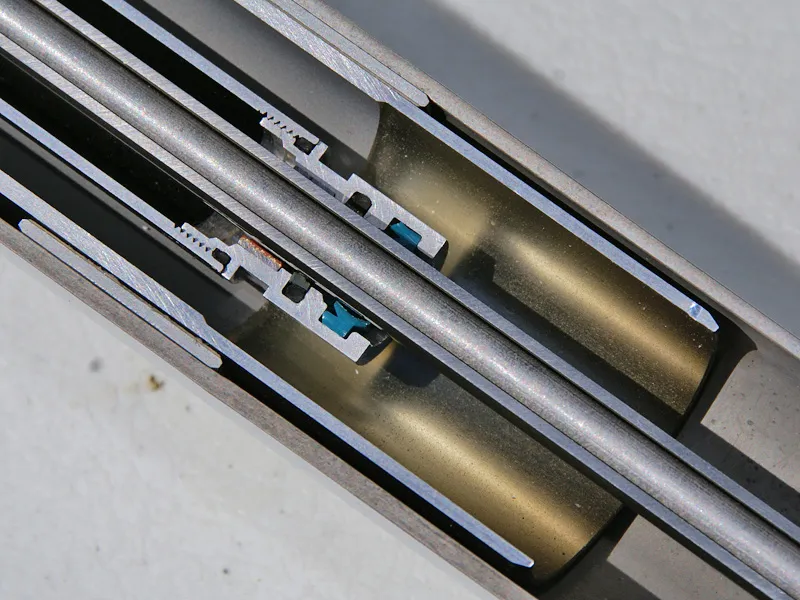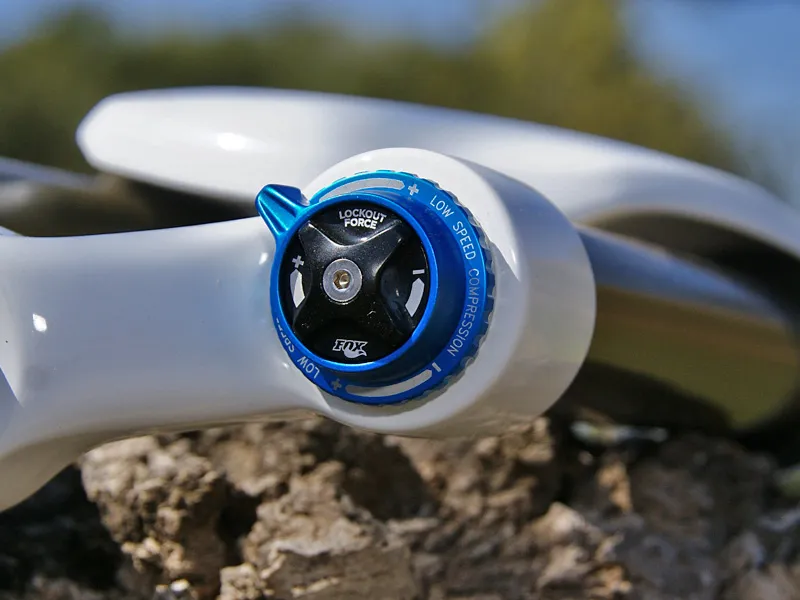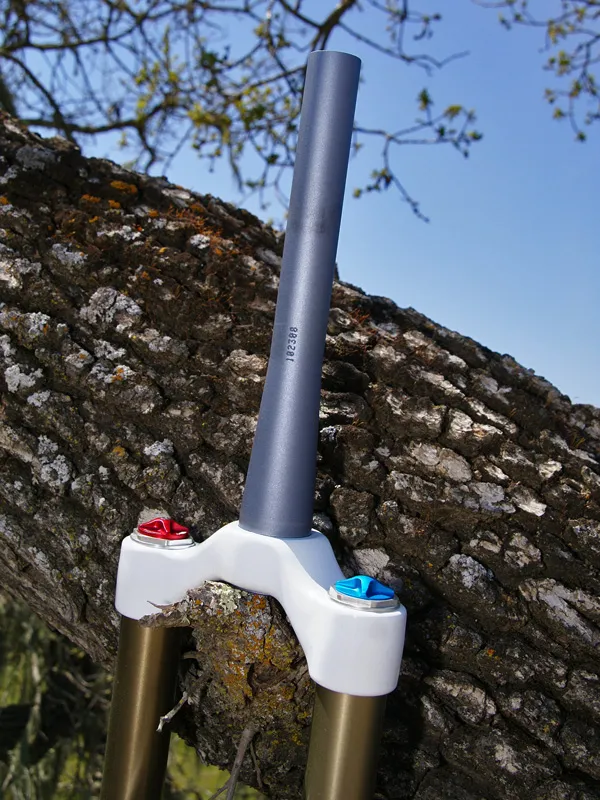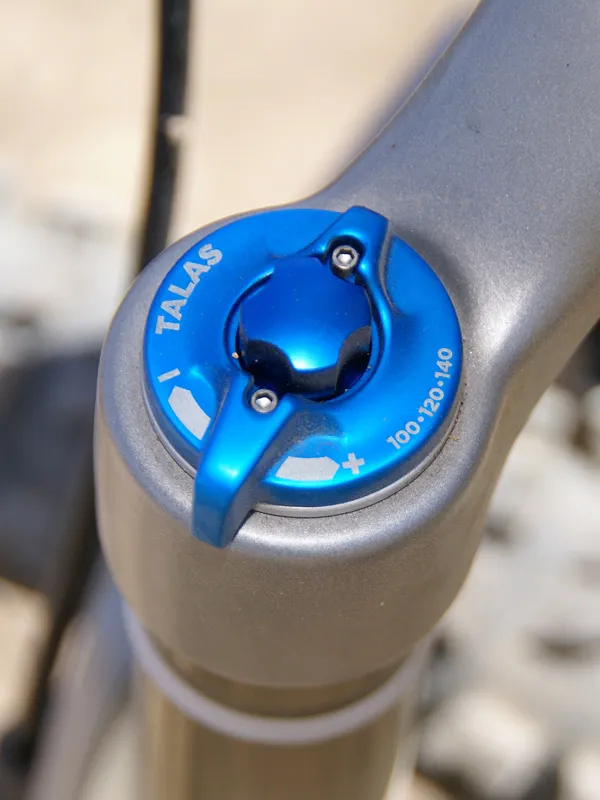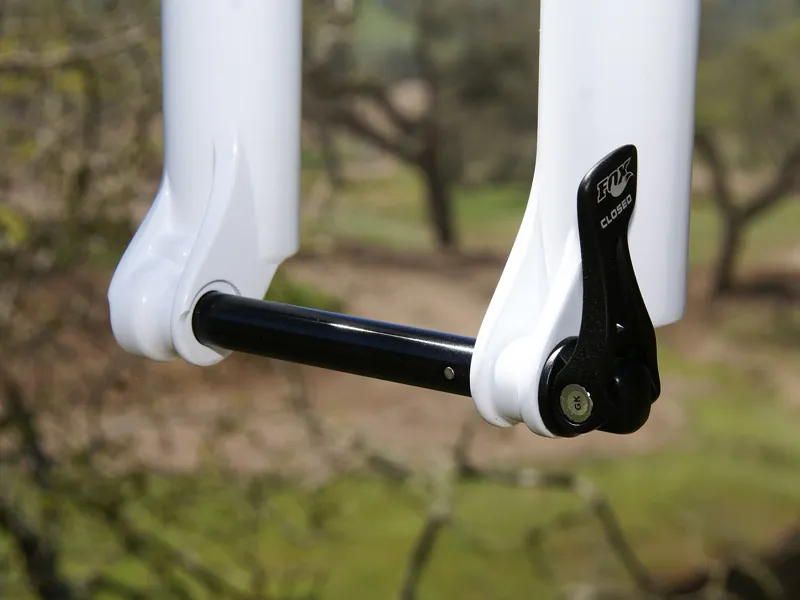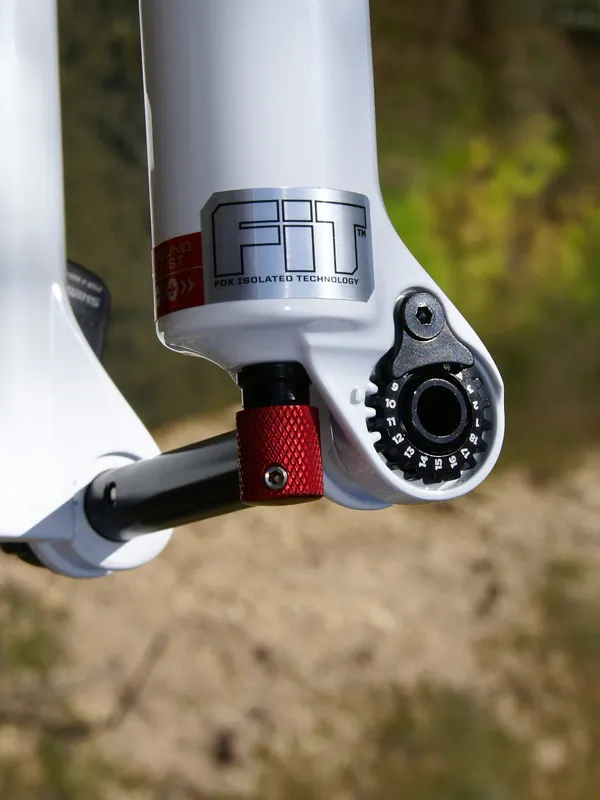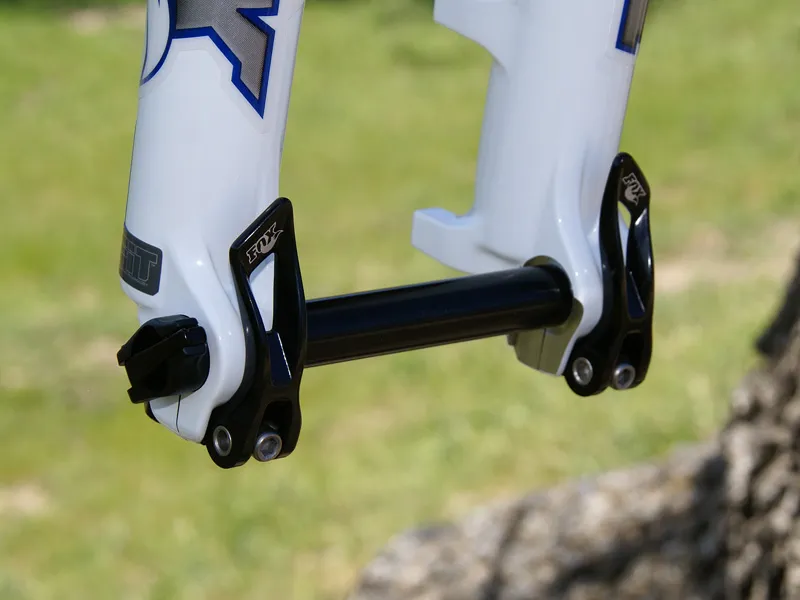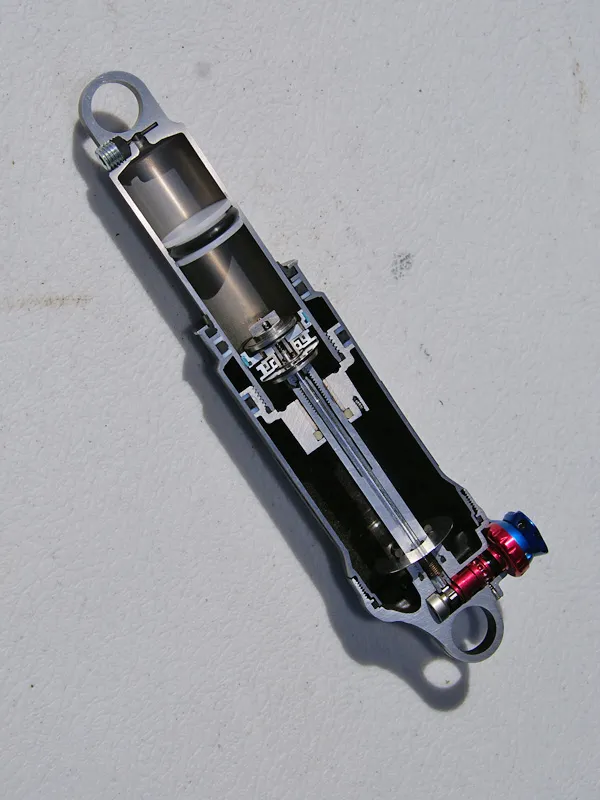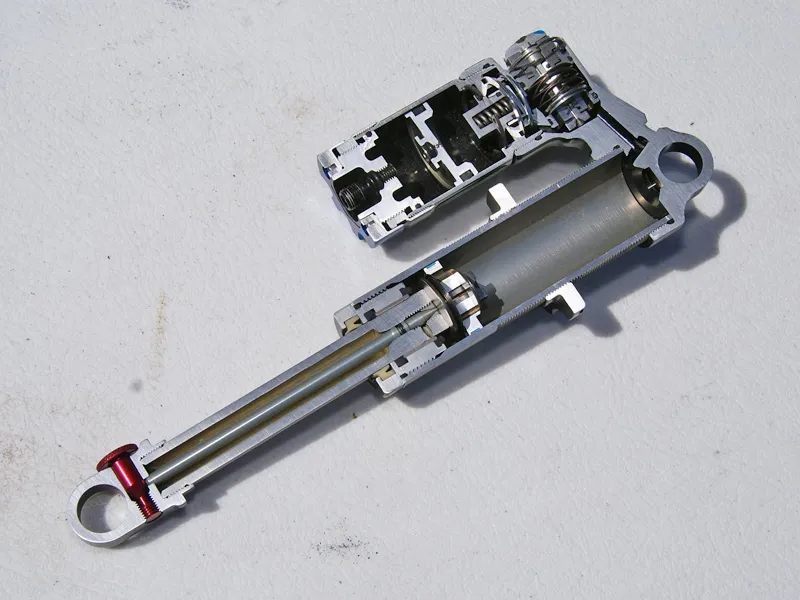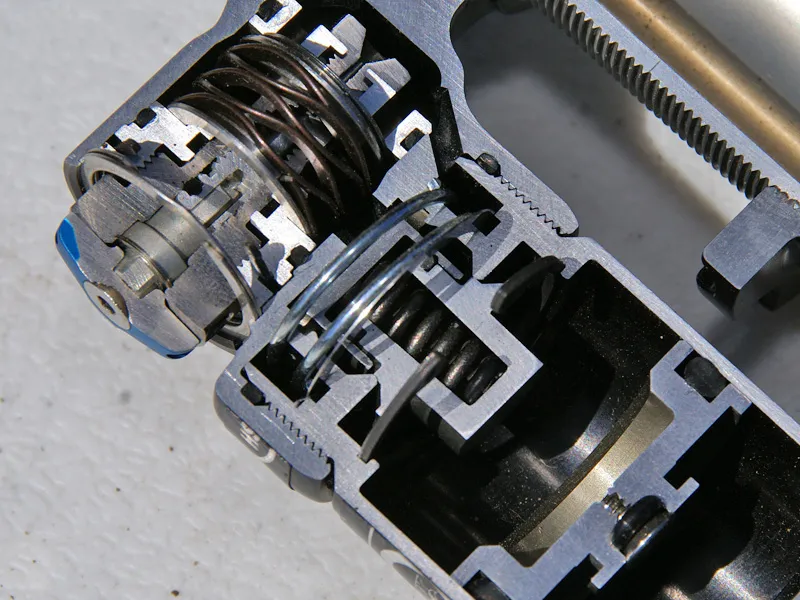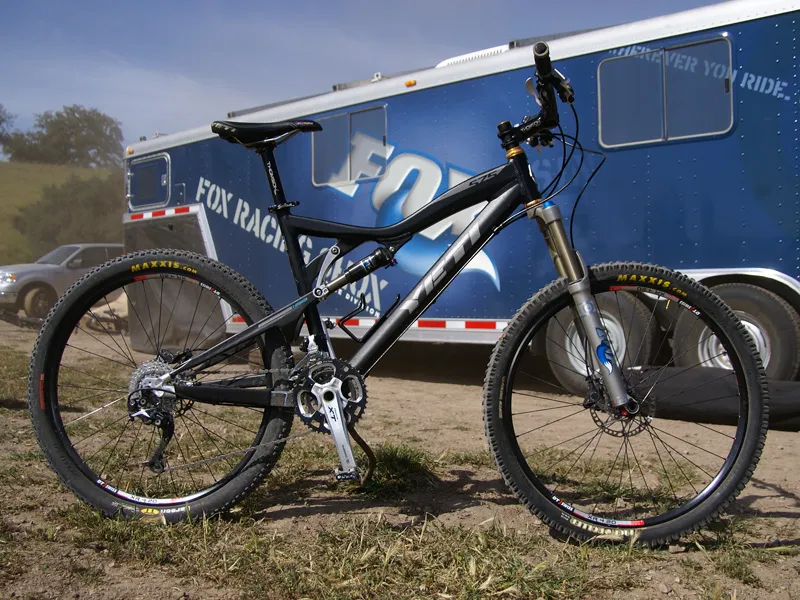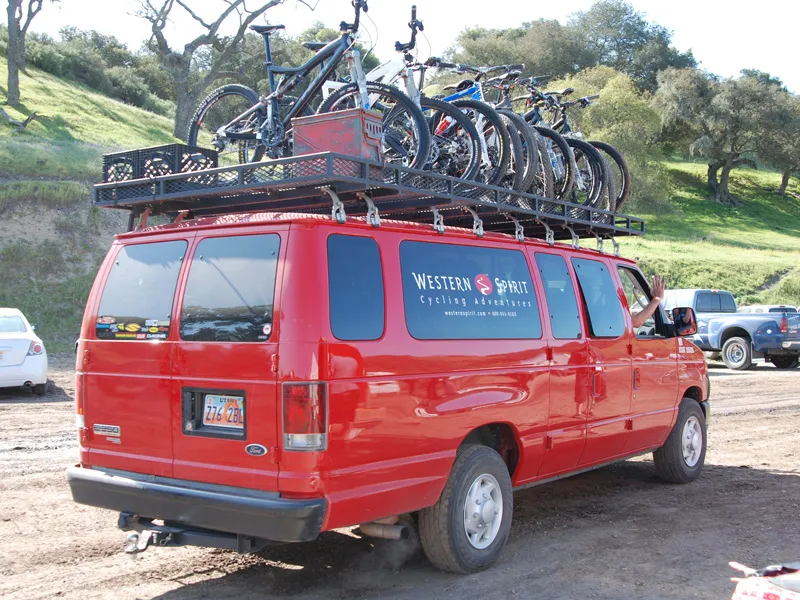Fox Racing Shox could easily rest on their laurels but instead sees ‘FIT’ to push things even further for 2010. We headed to Zaca Station in Santa Ynez Valley, California just before the Sea Otter Classic to check out the new lineup.
FIT dampers spread into the 32 range
The FIT (Fox Isolated Technology) cartridge-style dampers previously introduced on the 36 and 40 platforms are now littered throughout the 32 range for 2010 from the racer-oriented F-Series all the way through the coil-sprung Vanilla.
By separating the damping oil from air, the new floating piston designs reduce the chance of oil cavitation – and the loss of damping performance that results – relative to the existing open-bath models while the reduced oil volume also helps shed 71g, too. Additional massages to F-Series chassis shave even more weight, now making the top-end cross-country forks truly competitive weight-wise at 1.43kg (3.15lb) for the lightest models.
Smaller diameter damper shafts afford lower-friction seals, too, while an expanding rubber bladder at the top of the cartridge accommodates internal volume changes without any extra o-rings, thus maintaining comparably low levels of friction as on the open bath models.
The new cartridges also offer a wider range of low-speed compression damping adjustment than before as well as a more speed-sensitive shimmed rebound stack, and knob positions have changed due to the new internal architecture: rebound adjustment is now located at the bottom of the leg and lockout threshold adjustment on applicable models moves right up top.
Dropout options will include standard 9mm quick-release and stiffer 15mm thru-axles across the board – including on the revamped 29” model – and buyers can also get tapered 1 1/8”-to-1 1/2” steerer tubes on any 32, meaning that properly equipped riders can now have cross-country front ends with steering precision once only experienced with burlier trail bikes.
According to Fox bicycle division VP Mario Galasso, increased steering precision has gotten awfully popular, too: demand for the 15QR system introduced by Fox and Shimano last year has exceeded company forecasts by six-fold.
Those running rim brakes will also be happy to hear that Fox will continue to cater to them with cantilever boss-equipped lowers, too, but only for 26” wheels and on the shortest-travel models.
Other updates include new left- and right-handed remote levers, more linear spring curves for all air-sprung forks, lower friction on TALAS models as well as bigger and more ergonomic TALAS travel-adjust knobs. Last year’s somewhat heavy-handed compression tune updates have also been backed off a bit to regain a plusher feel.
Boost Valve introduced on Float rear shocks
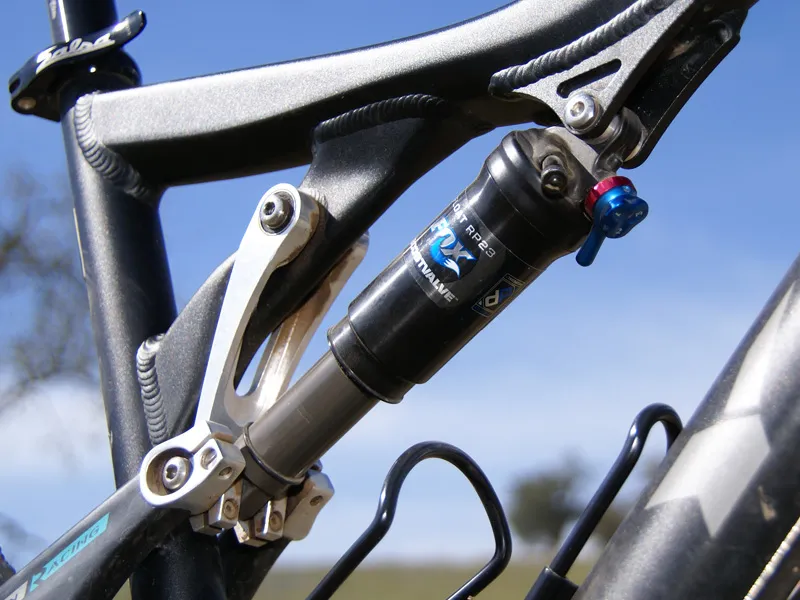
Fox currently use their position- and pressure-sensitive Boost Valve guts in the piggyback reservoirs of longer-travel rear shocks to provide more refined bottom-out control but have now figured out a way to repackage them to fit in the decidedly smaller air-sprung confines of the new Float RP23 and RP2.
In this application however, Boost Valve is not meant to aid the end of the stroke but rather the beginning to provide a more sophisticated pedaling platform. According to Fox, the additional valve is in fact so adept at relieving internal pressures created by trail impacts that there is no sacrifice in small bump performance while in ProPedal mode, meaning that, in theory, one could ride with Propedal on nearly all the time for pedaling efficiency with no loss in traction or comfort.
During our brief back-to-back ‘09/’10 test rides, there was no question which shock was Boost Valve-equipped and which one wasn't. The former offers noticeably better traction throughout the range of settings with nary a hint of harshness and the ride of our Yeti 575 test sled was decidedly more composed overall.
As for the claim that ProPedal efficiency is unchanged though – we’re not so sure. All of the ProPedal settings on our ’10 RP23 test unit felt softer off the top overall and we found ourselves running one or two clicks higher up the scale than on the first trial runs to get the desired level of firmness on the climbs. Even on the stiffest ‘3’ setting, we were still somewhat surprised at the relatively easy breakaway threshold.
To be fair, all of our test units were tuned to longer-travel trail bikes so they were already softer to begin with and the purported ‘platform-but-not’ effect might be more obvious on something with a more aggressive cross-country tune. On the positive side, we almost never felt the need to turn ProPedal off completely – just as promised – even when bombing down the old 2007 NMBS downhill course.
We’ll definitely need to spend a little more time on the new tunes before drawing final conclusions but in the worst case scenario, cross-country racers might be a bit disappointed that their rear suspensions might not feel quite as firm as before but trail riders will likely relish in the additional control. Time will tell.
Other tweaks
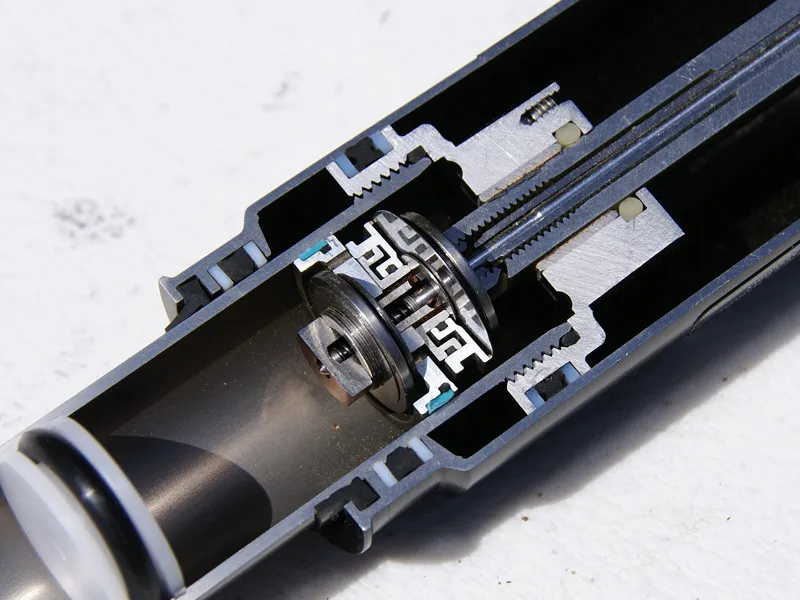
Last year's limited-production DHX RC4 rear shock
Last year’s limited availability DHX RC4 and RC2 rear shocks are now in full production complete with revised Boost Valve internals tunable to kick in during the last 1/2-to-1/4 of the travel while externally adjustable high- and low-speed compression adjusters handle the rest of the range. Larger-diameter shock shafts move oil for a wider tuning range and the eyelets are now forged for increased strength.
Potential DHX 5.0 upgrade candidates should take note however that the RC4 is a tad bigger – best to check the fit before plunking down the cash if possible.
36 and 40 forks dampers also get revised damper tunes yet again in keeping with racer requests during this past season and all 36 models will be available with tapered steerer tubes.
Still doesn’t feel right? Try ProTune
Fox have decided to launch their own custom tuning program largely to serve customers with older Fox products that would like to upgrade to more current levels of performance or riders who are simply unable to achieve the desired ride characteristics with the available range of external adjustments. Alternatively, ProTune may be just the thing for riders who may have purchased a used shock that was tuned for a different type of frame.
Potential ProTune customers are first guided through the adjustment process to ensure that they have exhausted all possibilities (meaning that they get a mini-training session out of the phone call if nothing else), at which point they can then send the shock or fork in to Fox for a retune for a nominal fee. Pricing is still to be determined.
Looking forward
Fox has already started retooling production lines for the new 2010 product and OEM customers are slated to begin delivery imminently with aftermarket shipments to begin shortly thereafter so you should start seeing this stuff sooner rather than later.
We’ll get going on evaluating the new Boost Valve-equipped Float rear shocks as soon as possible but for now, things are looking pretty good for 2010 overall with just one or two questions left to be answered. Stay tuned...

